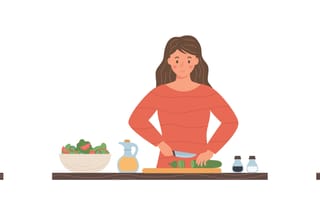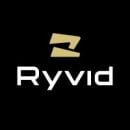The old phrase “too many cooks in the kitchen” is familiar and can be traced back to an even older and more evocative phrase: “Too many cooks spoil the broth.” Both phrases give the same warning — when collaboration isn’t well-managed, the results tend to be less than enjoyable.
Whether it happens in a kitchen or a Zoom meeting, well-orchestrated collaboration requires attentiveness and intention. Even if a team includes people with all the technical skills required to build and launch a new product, success depends on how well those people and teams can work together.
Collaboration requires soft skills like the ability to communicate clearly, practice teamwork and engage in effective decision-making. Built In sat down with two Los Angeles product leaders to learn about their best soft skill practices for streamlining collaboration.
Julia Guyadeen, group product manager at ChowNow, shared about how she inhabits her leadership role, making sure someone is designated to keep discussions on track.
“If a conversation is going in circles, I step in with clarifying questions or to guide us back to the goal,” she said.
Jesse Clift, director of product at Ryvid, agreed that role clarity is important.
“A RACI — responsible, accountable, consulted and informed — chart is a great starting point for clarifying roles and responsibilities and streamlining collaboration,” he told us.
Whether it’s a RACI chart or keeping discussions on track, these leaders’ tips will surely lead to more delicious collaborative experiences.
ChowNow is the ordering platform dedicated to helping local restaurants grow and compete in a sustainable way.
Describe your approach to collaboration in product management. Who do you collaborate with at your company and how?
Collaboration is an energizing and essential part of my job. We have a pod structure at ChowNow, which helps us build strong working relationships.
We plan together, leverage each other’s strengths and fail and learn together, all while making space for play. I also work with partners across functional teams that provide insights, feedback and execution support.
Design and engineering are my daily collaborators. I work closely with design to understand our users and explore how we might address their needs.
Engineers are involved in discussions about challenges and ideas early on, so we can ideate and quickly understand what's feasible and viable. My product marketing partner helps ensure that our product communicates our value and maintains our brand voice. They’re also responsible for keeping stakeholders like customer support and sales up-to-date.
Lifecycle marketing is a key partner in our growth and engagement campaigns. Our data science team helps with quantitative insights about our users' behavior and how to best measure the impact of product updates. I also partner closely with our CTO, CEO and cross-functional leaders for input on strategic prioritization.
How can you tell when collaboration is becoming unproductive or inefficient? What are some key signs you look out for?
Collaboration is healthy and important. Usually, lots of early collaboration leads to a more efficient process downstream. But, there are moments when a process or discussion becomes inefficient or unproductive. Here’s what I keep an eye out for:
1. Someone has tried to make a point multiple times and others are not “getting it.”
2. One person’s opinion is overshadowing other important perspectives.
3. There is no consensus and no one is willing to make a decision.
4. A discussion goes too deep or too broad at the wrong time, and we lose sight of the goal of the conversation.
What are the best practices you've developed for keeping collaboration streamlined without tipping into collaboration overload?
In my experience, large meetings are best for informing. They are typically not a great forum to gather input, because a few people usually dominate the discussion and quieter or more junior participants are less likely to speak up. Instead, I prefer to gather feedback in a Google doc or meet live in smaller groups.
To avoid surprise feedback from executives, I ask key senior stakeholders how and if they want to be involved. Sometimes they want to approve decisions, but often they’re happy to delegate. When a big group makes more sense, I prefer workshops where everyone can contribute via sticky notes and voting.
When practical, I look for opportunities to expedite processes. Do we really need a meeting, or can we do this asynchronously? Do we really need to wait for the review meeting in two weeks, or can we chat quickly tomorrow?
I also try to be thoughtful about when to create space for sweeping discussions and when to come in with a specific proposal. Sometimes the hardest part is making a decision; if I’m not in a position to do so, I try to identify who is.
Sometimes the hardest part is making a decision; if I'm not in a position to do so, I try to identify who is.”
Ryvid designs and engineers high-quality EV micro mobility products that redefine and disrupt the EV mobility industry.
Describe your approach to collaboration in product management. Who do you collaborate with at your company and how?
My sense of purpose and fulfillment comes from being of service to others. Consequently, my collaborative approach centers on identifying areas where I can effectively utilize my skills and experience to benefit individuals within the organization.
My product management role gives me the opportunity to collaborate with diverse departments including design, engineering, sales, operations and finance to bring Ryvid’s new product development process to fruition.
How can you tell when collaboration is becoming unproductive or inefficient? What are some key signs you look out for?
Excessive meetings and duplicate work are clear indicators of inefficient collaboration. Conflicts, missed deadlines, role confusion and frustration are also signs to look out for.
Excessive meetings and duplicate work are clear indicators of inefficient collaboration.”
What are the best practices you've developed for keeping collaboration streamlined without tipping into collaboration overload?
Prioritizing trust-building and reciprocity can strengthen a team’s bond. This happens through demonstrating genuine concern for each person’s well-being, both personally and professionally, and showing that you’re not solely seeking assistance but are also willing to offer support whenever required.









